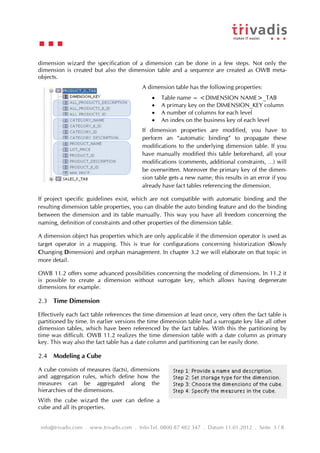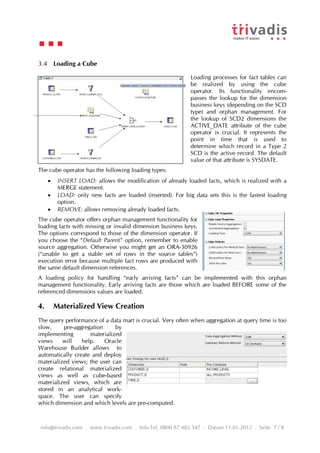This document describes the dimensional modeling features in Oracle Warehouse Builder 11gR2. It discusses how OWB allows users to efficiently model dimensions and cubes using wizards. It also covers how the dimension and cube operators can be used to implement loading processes with functionality for slowly changing dimensions, orphan management, and materialized view creation. However, the document notes that automatic binding of dimensions may overwrite manual changes and that some default settings, like temporary tables, cannot be disabled.







